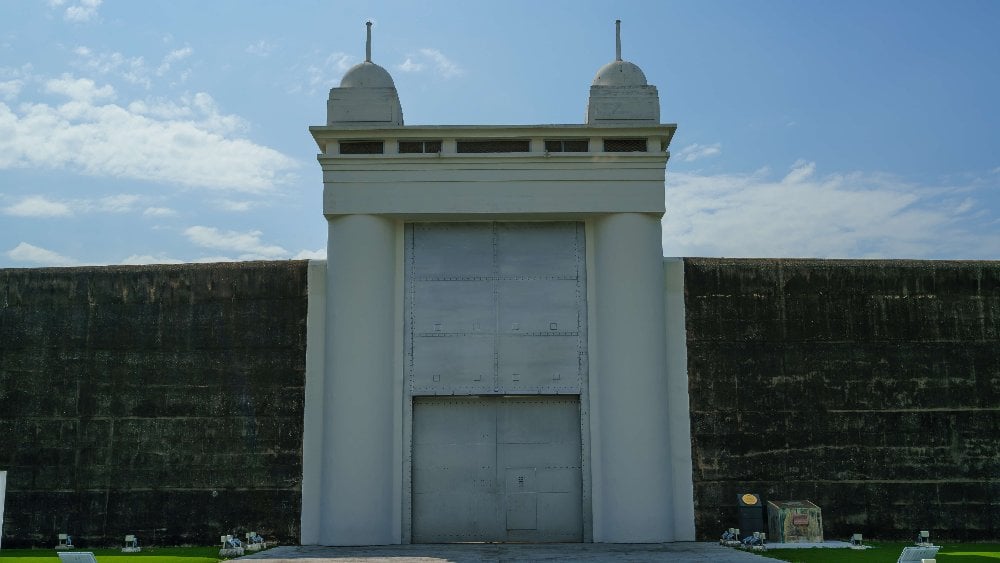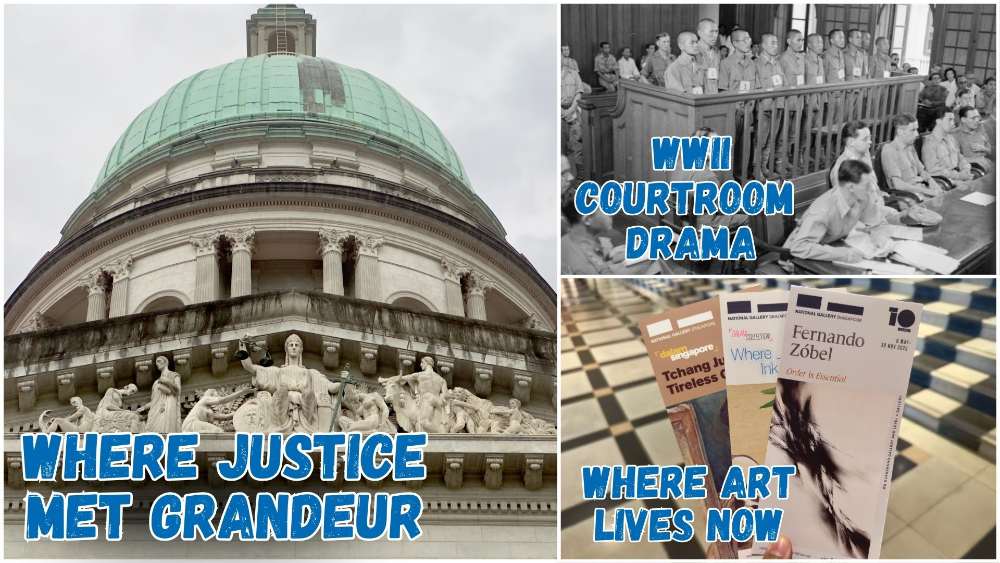Prisoners-Of-War Here Once Ate Sparrows And Rats Just To Stay Alive
What is a National Monument? Who gazettes them? How many are there in Singapore? To date, the Preservation of Sites and Monuments, a division of National Heritage Board, has identified and gazetted 75 buildings, structures and sites of national significance as an integral part of Singapore’s built heritage.
And we're here to tell you all about them - one National Monument at a time!
You've probably passed by or stepped into more than a few of them without realising they were National Monuments: Al-Abrar Mosque, Asian Civilisations Museum, the Civilian War Memorial, Saint Andrew's Cathedral, the Esplanade Park Memorials, Fort Siloso on Sentosa - no need to plan an itinerary for friends visiting from overseas; just show them this article ✌️
In this edition, we highlight a prison originally built for maximum security prisoners, but later used as an internment camp for civilians and Prisoners-of-War (POW) during the Japanese Occupation (1942-1945), Changi Prison.
📍 Location
The Changi Prison Gate Wall and Turrets were collectively gazetted as Singapore's 72nd National Monument. Want to check them out? The MRT station nearest to them is Tampines East.
📅 Significant dates
Date built:
- 1936: Changi Prison was constructed
Milestones:
- 1942: Changi Prison became the main POW camp in Southeast Asia
- 15 Oct 1947: Changi Prison was returned to civilian control
- 2004: Changi Prison underwent renovation works; the only surviving structures of the original building are the entrance gate, a 180m stretch of the wall, and two corner turrets
Date gazetted: 15 Feb 2016
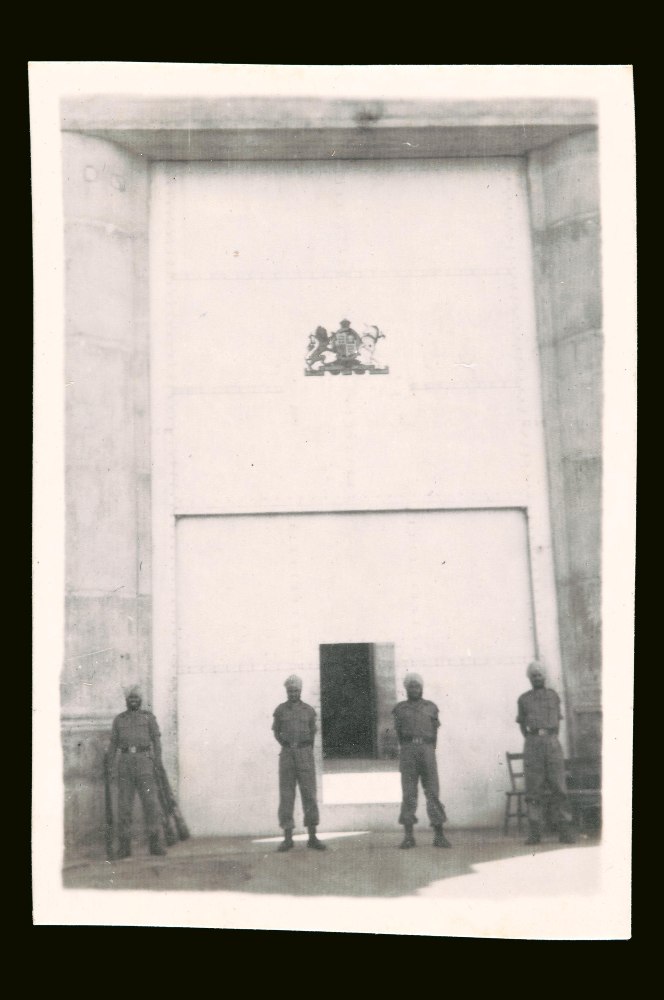
The entrance to Changi Prison, circa 1946. | IMAGE: NATIONAL MUSEUM OF SINGAPORE, COURTESY OF NATIONAL HERITAGE BOARD
📜 History
Between 1825 and 1873, Singapore operated two separate incarceration systems: the Convict Prison, overseen by the head of the Public Works Department, and the Civil Prison, managed by the High Sheriff.
The Convict Prison at Bras Basah housed convicts transported from India, while the Civil Prison at Pearl’s Hill held local offenders awaiting trial. By today’s standards, the discipline in these prisons was quite lax, often resulting in jailbreaks.
In 1871, reforms began after the establishment of the Prison Discipline Commission, which reviewed prison systems in British colonies.
A report published in 1872 laid the groundwork for a better organised prison administration in Singapore. This led to the Prisons Ordinance of 1872, which created the office of the Inspector of Prisons to manage all jails in the colony, formalised prison management regulations, and established a stricter discipline framework for prisons.
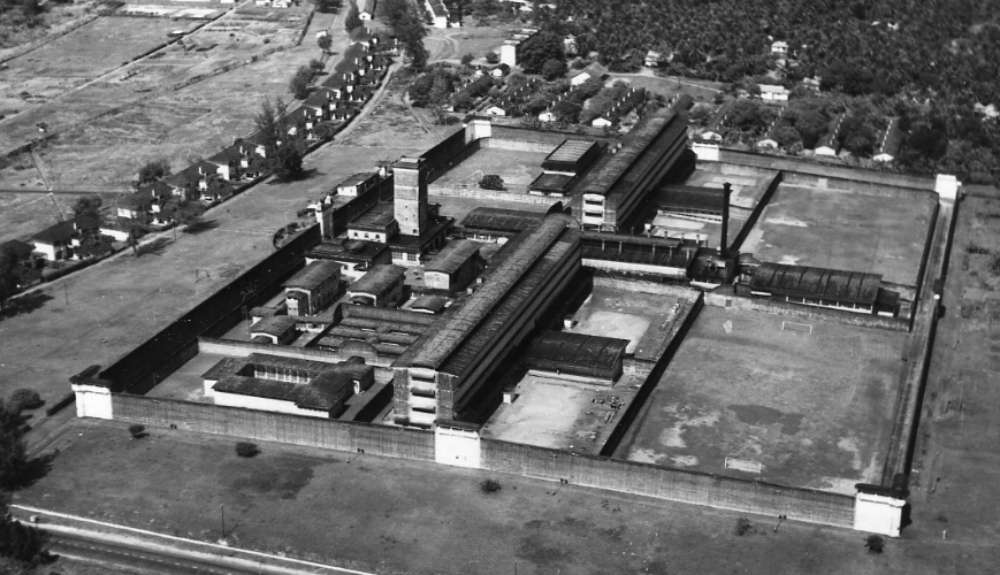 An aerial view of Changi Prison in the 1950s. | IMAGE: RAFSA COLLECTION, NATIONAL ARCHIVES OF SINGAPORE
An aerial view of Changi Prison in the 1950s. | IMAGE: RAFSA COLLECTION, NATIONAL ARCHIVES OF SINGAPORE
Despite these reforms, overcrowding in prisons persisted, and the new Criminal Prison at Pearl’s Hill, completed in 1882, only provided temporary relief. This pressing issue led to the construction of Changi Prison, finished in 1936.
Changi Prison featured a comprehensive alarm system and electric lighting in its cells. It began operations on 4 Jan 1937, transferring long-term prisoners from Pearl’s Hill Criminal Prison (later known as Outram Road Prison), which was then repurposed for housing short-term convicts.
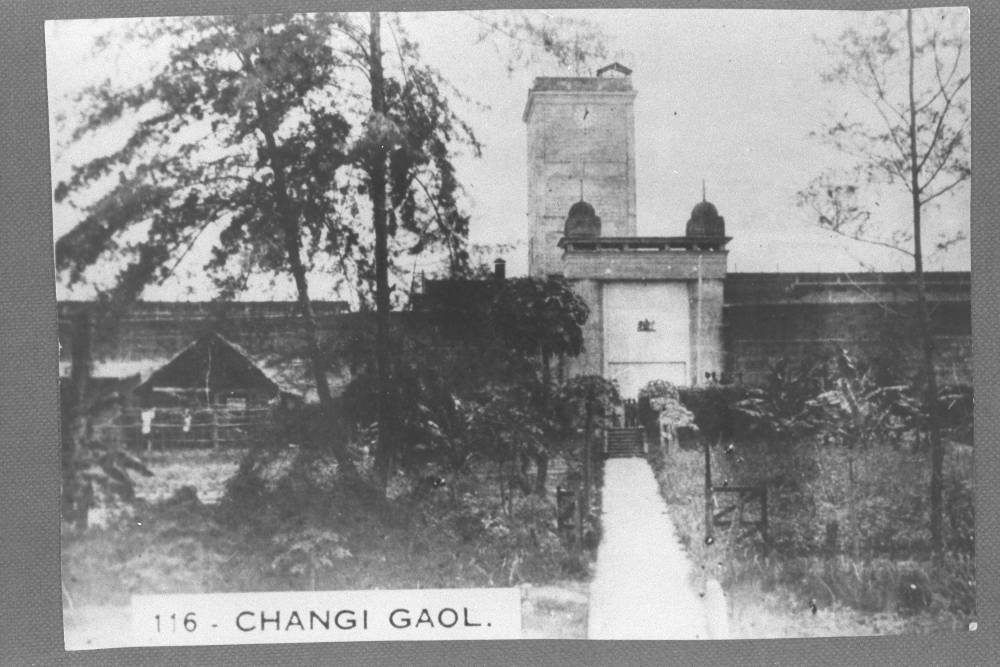 The main entrance of Changi Prison during the Japanese Occupation. | IMAGE: NATIONAL ARCHIVES OF SINGAPORE
The main entrance of Changi Prison during the Japanese Occupation. | IMAGE: NATIONAL ARCHIVES OF SINGAPORE
Following the British surrender on 15 Feb 1942, Changi area, including Changi Prison, became the principal Prisoner-of-War (POW) camp in Southeast Asia. This camp housed both POWs and civilians, with over 2,500 people, including the entire British civil service, crammed into the prison.
As the Occupation continued, conditions in Changi Prison worsened significantly. Food shortages became severe, reducing many internees to skin and bones.
By May 1944, the prison housed over 5,000 prisoners in poorly ventilated cells. To alleviate overcrowding, POWs had to build attap huts in the prison courtyards, even after civilian internees had been relocated to make room for military POWs from Changi barracks and those returning from the Thai-Burma Death Railway.
In the war's final stages, the extreme scarcity of food forced the POWs to hunt wildlife, such as sparrows and rats, to supplement their diet.
The POWs were freed on 6 Sep 1945, just days before the Japanese signed the surrender document in the Municipal Building (part of the National Gallery today). From then until 1947, Changi Prison served as the site for several military trials, and those convicted of war crimes against POWs and civilians were executed there.
The prison was returned to civilian control on 15 Oct 1947.
📐 Design and architecture
Changi Prison, built as a maximum-security facility, housed up to 600 prisoners serving sentences longer than 15 months for crimes such as theft and attempted murder. The steel and concrete structure was enclosed by a high perimeter wall over 6m tall, making escapes virtually impossible.
Four turrets, functioning as watchtowers, overlooked the prison compound, and entrance to the prison was controlled by a double-leafed steel gate.
The prison employed a “telephone-pole” layout, common in late-19th- and 20th-century prison designs. It consisted of two four-storey cell blocks branching from a central covered corridor, allowing wardens quick access to the blocks.
In 2004, much of the original Changi Prison was demolished to make way for a new complex. However, key architectural features, including the entrance gate, a 180m stretch of the wall, and two corner turrets, were preserved and collectively gazetted as the Lion City's 72nd National Monument.
👣 Changi Heritage Trail
While the monument is a restricted area that is closed to the public, you can visit the information board located along Upper Changi Road North. Find out more about it in our article here.
And while you're at it, why not explore the rich history of the Changi area? Check out the National Heritage Board's Changi Heritage Trail, where you'll have the chance to revisit the narratives and monuments that shaped Changi's fascinating, yet, at times, gloomy history.
For the latest updates on Wonderwall.sg, be sure to follow us on TikTok, Telegram, Instagram, and Facebook. If you have a story idea for us, email us at [email protected].







